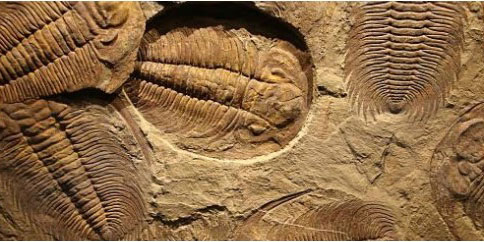The past is in the past – why should we be looking back?
PhD student Alex Payne looks at how the geological record has a fundamental role to play in comprehending the modern world.

Our planet is in a near constant state of change. New interactions between organisms and their environment mean that life on Earth is never exactly the same as it was the day before. New births, new deaths. Perhaps a pollinator species finds a new island of flowers and facilitates gene flow, or the last individual of a population dies and makes its species locally extinct. No matter how small these changes may seem, when given years, decades, or centuries to accrue they have the potential to drastically alter the environment around us. Connecting historical context to modern ecosystems is invaluable in our understanding of how the natural world operates, but when we consider the longevity of life on this planet, even patterns across millennia start to become small-scale in comparison.
Where did particular clades originate? How do we define native and invasive species? How will groups respond to projected climate change? The geological past can give us new perspectives to contemporary issues such as these through a better understanding of how diversification, distributions and abiotic environments have been shaped over millions of years.
New Insight into Old Mysteries
Approaching established ideas through a new lens often identifies discrepancies that have previously gone unnoticed. A growing trend amongst evolutionary biologists has been to incorporate fossil data into diversification studies of living groups (Koch & Parry, 2020) to gain a more balanced understanding of clade dynamics, since speciation and extinction both have integral roles in shaping evolutionary history – when we use living species in isolation, we are only getting half the story.
Macropodini, the group of marsupials that includes the emblematic kangaroos and wallabies of Oceania, illustrates this phenomenon well. Phylogenies that incorporate only living species suggest that the group began to radiate around 11 million years ago, coinciding with (and suggested to be driven by) the onset of aridification in mainland Australia during the Miocene. This view remained relatively unchallenged until 2018, when a study of dental macrowear and crown heights of fossil Macropodines spanning 25 million years identified rapid divergence in the group near to the Pliocene-Pleistocene boundary (six million years later than initially hypothesised) and instead attributed the expansion of grassland habitat as its primary driver (Couzens & Prideaux, 2018). Despite the incomplete nature of the fossil record, bridging the gap between the past and the present by taking advantage of the data it provides can inevitably advance our understanding of evolutionary history more than if we ignore it entirely.
Lessons for the Future
So, we know that we can use the past to challenge views of the world as it is today, but can it tell us more than that? Can it tell us anything about the future? Since life began, the Earth has gone through a lot – mass extinctions from volcanism, meteorites, oscillations of global temperature and oxygen levels - so there will invariably be analogues in the past that we can use to predict patterns in diversification and distribution going forward. Arguably the best comparison we have for anthropogenic climate change is the Palaeocene-Eocene Thermal Maximum that occurred 55.5 million years ago, a time where global temperatures rose 5-8˚C as a result of huge carbon release. In fact, because we have good record of how several environmental variables have changed over millions of years, we can use this data to assess how living clades may respond to future climate change.
Anomurans are the sister group to true crabs, and include hermit crabs, king crabs and squat lobsters. A macroevolutionary study by Davis et al. (2016) found that speciation rate is significantly correlated with times of global cooling across the Anomura tree – but when the group was partitioned by ecology a slightly different story was found. Speciation rates in marine clades were associated with global cooling, but freshwater clades had the opposite response, being positively correlated with temperature. These macroevolutionary patterns enhance our understanding of the diversity of the group but can also feed directly into modern conservation strategies to help preserve it. In this scenario, marine anomurans are more likely to be threatened by anthropogenic climate change than their freshwater counterparts due to rising temperatures, and by identifying this we can more effectively prioritise conservation for groups that are at higher risk of extinction.
The past may be in the past, but that does not mean it has lost its use in the present. The geological record is more than just documentation of bygone eras and extraordinary prehistoric beasts. It has a fundamental role to play in comprehending the modern world, how its inhabitants have adapted to dynamic environments and how this balance may change in the near future.
References
Couzens, A. M. C., & Prideaux, G. J. (2018). Rapid Pliocene adaptive radiation of modern kangaroos. Science, 362(6410), 72–75. https://doi.org/10.1126/science.aas8788
Davis, K. E., Hill, J., Astrop, T. I., & Wills, M. A. (2016). Global cooling as a driver of diversification in a major marine clade. Nature Communications, 7(1), 1–8. https://doi.org/10.1038/ncomms13003
Koch, N. M., & Parry, L. A. (2020). Death is on our side: Paleontological data drastically modify phylogenetic hypotheses. Systematic Biology, 69(6), 1052–1067. https://doi.org/10.1093/sysbio/syaa023